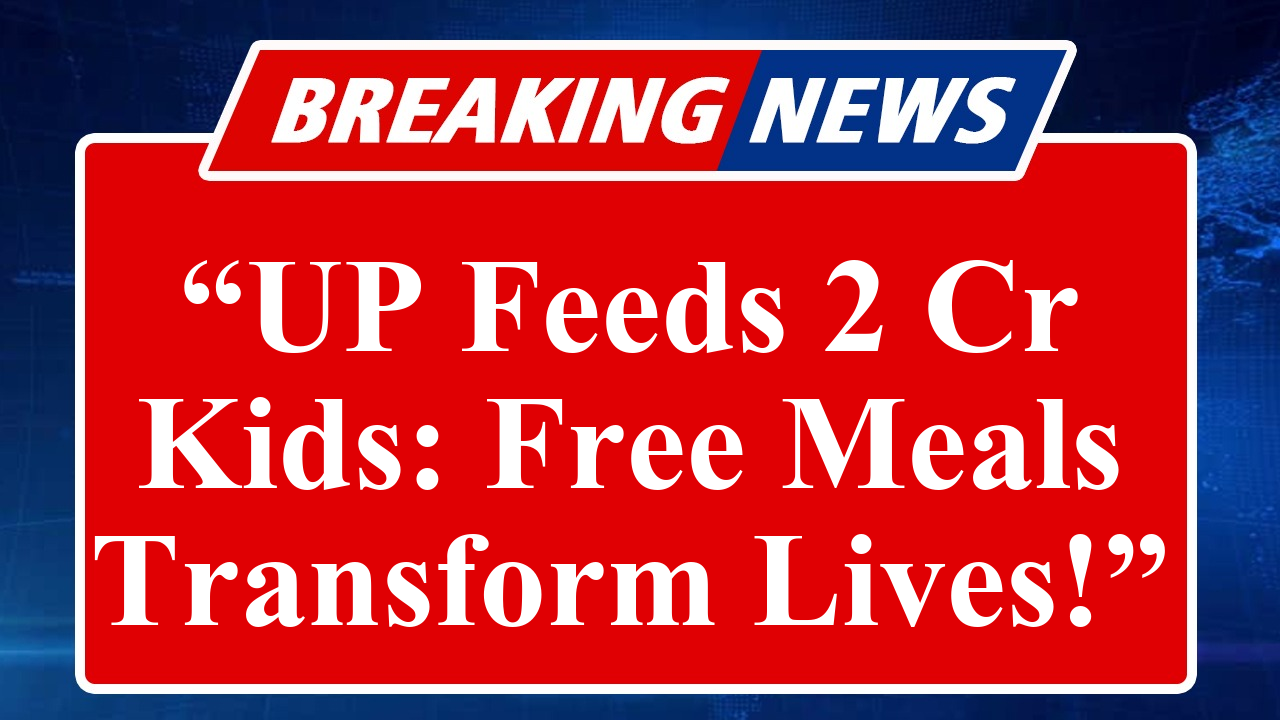Uttar Pradesh’s nutrition drive provides free, nutritious meals to over 2 crore schoolchildren, aiming to combat malnutrition and boost school attendance. Despite challenges like food inflation and logistical issues, the state’s Mid-Day Meal Scheme ensures 450-700 kcal meals with protein and micronutrients. The initiative faces scrutiny over quality but remains a cornerstone of child welfare.
Uttar Pradesh Bolsters Child Nutrition with Free School Meals
Uttar Pradesh, India’s most populous state, has intensified efforts to address child malnutrition and improve educational outcomes through its expansive Mid-Day Meal Scheme, officially known as the Pradhan Mantri Poshan Shakti Nirman (PM POSHAN). As of August 2025, the program serves over 2 crore children across 1.27 million government and government-aided schools, providing free lunches on school days to students in pre-primary, primary, and upper-primary classes. The initiative, rooted in the National Food Security Act, 2013, mandates meals delivering 450 kcal and 12g of protein for primary students and 700 kcal and 20g of protein for upper-primary students, fortified with micronutrients like iron, vitamin B12, and folate.
The state’s nutrition drive aligns with India’s broader goal to reduce malnutrition, with Uttar Pradesh facing significant challenges: 36% of children under five are stunted, and 32.1% are underweight, according to the National Family Health Survey-5. To counter this, the scheme incorporates diverse food items, including cereals, pulses, and vegetables, with 14 states, including Uttar Pradesh, offering eggs twice weekly to boost protein intake. However, religious and caste-based objections have sparked debates, with some groups opposing eggs in meals, citing cultural sensitivities.
Rising food inflation, averaging 6.3% from June 2020 to June 2024, has strained the program’s budget, unchanged since October 2022 at ₹5.45 per primary student and ₹8.17 per upper-primary student. Teachers in districts like Sitapur report substituting nutritious vegetables like carrots with cheaper alternatives like pumpkin and diluting milk to manage costs. Despite these constraints, the scheme has increased school enrollment by 10-15% in rural areas and reduced dropout rates, particularly among girls, by providing an economic incentive for families.
The state has introduced measures to enhance meal quality, such as biometric authentication for supply chain transparency and partnerships with organizations like the Akshaya Patra Foundation, which serves 2 million children nationwide. However, incidents like the 2025 case in Bihar, where a dead snake was found in a school meal, highlight persistent quality control issues. Uttar Pradesh has responded by training over 200 cooks in safe cooking practices and leveraging technology for real-time monitoring of food security indicators.
To address nutritional gaps, the state is piloting nutrigardens in schools to grow fresh vegetables and involving women’s self-help groups to strengthen local supply chains. Experts emphasize the need for dietary diversity beyond cereals, advocating for millets, pulses, and fortified foods. The “One Nation, One Ration Card” scheme has also been accelerated to ensure migrant children access meals, with Uttar Pradesh aiming to include three non-cereal items in its Public Distribution System by 2026.
Critics argue that the program’s success hinges on overcoming logistical hurdles and increasing funding to match inflation. A 2019 federal recommendation for a ₹375 daily minimum wage to ensure a balanced diet underscores the economic pressures families face. While the scheme has shown inter-generational benefits—women who benefited from free meals in school have children with better linear growth—experts call for extending the program to adolescents and improving meal quality to maximize impact.
Disclaimer: This article is based on recent reports, government data, and expert analyses from sources like The Hindu, Reuters, and the World Food Programme. Information reflects the latest available data as of August 2025. Nutritional guidelines and program details are sourced from official government portals and studies. Readers are advised to verify real-time updates through official channels.

